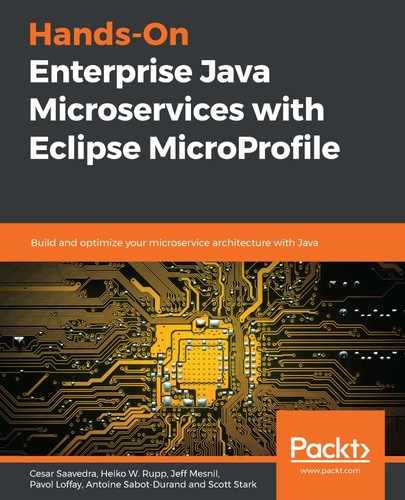Book Description
An effective guide to designing, building, and deploying enterprise Java microservices with Eclipse MicroProfile
Key Features
- Create cloud-native microservices with ease using this detailed guide
- Avoid vendor lock-in when implementing microservices using Eclipse MicroProfile
- Discover why MicroProfile is a great specification for building microservices in multi-cloud environments
Book Description
Eclipse MicroProfile has gained momentum in the industry as a multi-vendor, interoperable, community-driven specification. It is a major disruptor that allows organizations with large investments in enterprise Java to move to microservices without spending a lot on retraining their workforce.
This book is based on MicroProfile 2.2, however, it will guide you in running your applications in MicroProfile 3.0. You'll start by understanding why microservices are important in the digital economy and how MicroProfile addresses the need for enterprise Java microservices. You'll learn about the subprojects that make up a MicroProfile, its value proposition to organizations and developers, and its processes and governance. As you advance, the book takes you through the capabilities and code examples of MicroProfile's subprojects - Config, Fault Tolerance, Health Check, JWT Propagation, Metrics, and OpenTracing. Finally, you'll be guided in developing a conference application using Eclipse MicroProfile, and explore possible scenarios of what's next in MicroProfile with Jakarta EE.
By the end of this book, you'll have gained a clear understanding of Eclipse MicroProfile and its role in enterprise Java microservices.
What you will learn
- Understand why microservices are important in the digital economy
- Analyze how MicroProfile addresses the need for enterprise Java microservices
- Test and secure your applications with Eclipse MicroProfile
- Get to grips with various MicroProfile capabilities such as OpenAPI and Typesafe REST Client
- Explore reactive programming with MicroProfile Stream and Messaging candidate APIs
- Discover and implement coding best practices using MicroProfile
Who this book is for
If you're a Java developer who wants to create enterprise microservices, this book is for you. Familiarity with Java EE and the concept of microservices will help you get the most out of this book.
Downloading the example code for this ebook: You can download the example code files for this ebook on GitHub at the following link: https://github.com/PacktPublishing/Hands-On-Enterprise-Java-Microservices-with-Eclipse-MicroProfile. If you require support please email: [email protected]
